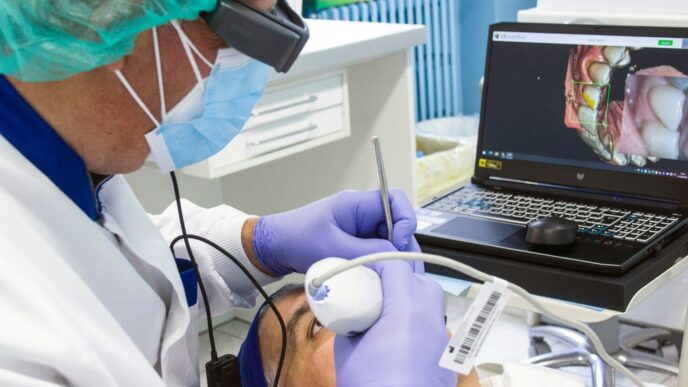Dealing with pancreatic cancer can feel like a lot. It’s a complex illness, and figuring out the best path forward for diagnosis and treatment is a big job. This guide is here to break down the important stuff, making it easier to understand what’s happening and what your options are. We’ll cover how doctors find the cancer, how they figure out how far it’s spread, and all the different ways it can be treated. Plus, we’ll talk about managing side effects and finding the right support. It’s all about getting you the information you need.
Key Takeaways
- Getting a clear diagnosis for pancreatic cancer involves various methods, from imaging scans like CT and MRI to looking at the cancer’s cells and even genetic testing. These steps help doctors understand the specific type and stage of the disease.
- Understanding the stage of pancreatic cancer is important because it helps doctors predict how the cancer might behave and plan the most suitable treatment.
- Treatment for pancreatic cancer is varied and can include surgery, chemotherapy, radiation, and newer approaches like targeted therapy and immunotherapy. The choice depends on the cancer’s stage and the patient’s overall health.
- Managing the side effects of treatment is a big part of care. This includes dealing with symptoms, getting proper nutrition, controlling pain, and taking care of your emotional well-being.
- A team of different medical specialists works together to provide the best care for pancreatic cancer patients, and patients and their families play an active role in making informed decisions about treatment and support.
Understanding Pancreatic Cancer Diagnosis
Figuring out if you have pancreatic cancer is the first big step, and it often involves a few different tests. It’s not usually a simple one-and-done kind of thing. Doctors use a mix of tools to get a clear picture.
Diagnostic Imaging Techniques
Imaging tests are like looking inside your body without actually opening it up. They help doctors see the pancreas and spot any unusual areas. You might have:
- CT Scans (Computed Tomography): These use X-rays from different angles to create detailed cross-sectional images. They’re really good at showing the size and shape of tumors and if they’ve spread.
- MRI Scans (Magnetic Resonance Imaging): MRIs use magnets and radio waves to get even more detailed pictures, especially of soft tissues. They can sometimes show things CT scans might miss.
- Endoscopic Ultrasound (EUS): This is a bit more involved. A thin, flexible tube with a tiny ultrasound device on the end is gently guided down your throat and into your stomach or the first part of your small intestine. From there, it can get very close to the pancreas, providing high-quality images. This method is often used to get a tissue sample, too.
- PET Scans (Positron Emission Tomography): Sometimes used, PET scans can help find cancer cells that may have spread to other parts of the body by looking at how cells use sugar.
Molecular Diagnostic Tools
Beyond just seeing a tumor, doctors want to know more about the cancer cells themselves. This is where molecular diagnostics come in.
- Biopsy: This is the gold standard for confirming cancer. A small piece of tissue is taken from a suspicious area, usually during an EUS or sometimes with a needle through the skin. This sample is then looked at under a microscope by a pathologist.
- Tumor Markers: Blood tests can sometimes detect specific substances, called tumor markers, that cancer cells might produce. For pancreatic cancer, CA19-9 is a common marker that doctors might track. However, it’s not always present in everyone with pancreatic cancer, and it can be elevated for other reasons too, so it’s not used alone to diagnose.
- Genetic Profiling: Analyzing the DNA of the cancer cells can reveal specific mutations. Knowing these mutations can sometimes point to targeted treatments that might work better for that particular cancer.
Genetic Testing for Risk and Treatment Guidance
Genetic testing plays a dual role. It can be done for a couple of different reasons:
- For Patients with a Diagnosis: If you’re diagnosed with pancreatic cancer, your doctor might suggest genetic testing. This looks for inherited changes in your DNA that might have contributed to the cancer. Knowing this can sometimes influence treatment choices, as certain genetic mutations might make specific therapies more effective. It also helps your family members understand if they might have an increased risk.
- For Family History/Risk Assessment: Sometimes, genetic testing is done for individuals with a strong family history of pancreatic cancer, even before a diagnosis, to assess their personal risk.
These tests help paint a fuller picture, guiding not just the diagnosis but also the path forward for treatment and family awareness.
Key Aspects of Pancreatic Cancer Staging
Once pancreatic cancer is found, the next big step is figuring out how far it’s spread. This is called staging. It’s a really important part of the process because it helps doctors understand what they’re dealing with and how best to approach treatment. Think of it like mapping out a journey before you start driving – you need to know where you’re going and what obstacles might be in the way.
Determining the Extent of Cancer
Doctors use a few different methods to get a clear picture of the cancer’s reach. Imaging tests are a big part of this. These can include:
- CT scans: These use X-rays to create detailed cross-sectional images of your body.
- MRI scans: Magnetic Resonance Imaging uses strong magnets and radio waves to get even more detailed images, especially of soft tissues.
- Endoscopic Ultrasound (EUS): This involves a thin tube with a camera and an ultrasound device that goes down your throat. It allows doctors to get close-up images of the pancreas and surrounding areas, and often to take a small tissue sample (biopsy) right then and there.
- PET scans: Sometimes used to see if cancer has spread to other parts of the body.
Along with imaging, doctors will look at biopsy results. This is where a small piece of the tumor is examined under a microscope to confirm it’s cancer and to learn more about the specific cells. Blood tests, like the CA19-9 marker, might also be used, though they aren’t always definitive on their own.
Understanding Cancer Stages
Pancreatic cancer is typically staged using a system that ranges from Stage 0 to Stage 4. The lower the number, the less the cancer has spread. Generally, Stage 0 means cancer cells are found only in the innermost lining of the pancreatic duct, while Stage 4 means the cancer has spread to distant parts of the body.
Here’s a simplified look at what the stages generally mean:
- Stage 0 (Carcinoma in situ): Abnormal cells are present, but they haven’t spread beyond where they started.
- Stage I: Cancer is confined to the pancreas.
- Stage II: Cancer has grown outside the pancreas but hasn’t reached major blood vessels or nearby nerves.
- Stage III: Cancer has spread to nearby major blood vessels, nerves, or lymph nodes.
- Stage IV: Cancer has spread to distant organs like the liver, lungs, or peritoneum.
Prognosis and Treatment Planning
Knowing the stage is super helpful for doctors. It gives them a better idea of what to expect down the road – that’s the prognosis. It also guides the treatment plan. For example, if the cancer is caught very early and is localized, surgery might be a primary option. If it’s spread more widely, the focus might shift more towards managing symptoms and improving quality of life with treatments like chemotherapy or radiation.
It’s a lot to take in, but understanding these staging aspects is a key step in figuring out the best path forward for treatment.
Comprehensive Pancreatic Cancer Treatment Options
When it comes to treating pancreatic cancer, things can get pretty involved. The main goal is usually to get rid of the cancer if that’s possible. But if not, the focus shifts to making life better and stopping the cancer from getting worse. Your doctors will figure out the best plan based on where the cancer is, how far it’s spread, and how healthy you are overall. It’s a lot to take in, but knowing the options is the first step.
Surgical Interventions
Surgery is often the first thing people think of, and for some, it’s the best shot at removing the cancer. The most well-known procedure is the Whipple procedure, which is used when the cancer is in the head of the pancreas. This surgery is complex because it involves removing part of the pancreas, the first part of the small intestine (duodenum), the gallbladder, and the bile duct. Then, everything is reconnected. It’s a big surgery, and recovery takes time, often involving a hospital stay and several weeks at home. It’s really important to have this done by surgeons and at hospitals that have a lot of experience with pancreatic cancer surgeries. Sometimes, surgery might not be an option right away, but treatments like chemo and radiation might be used first to try and shrink the tumor, making surgery possible later.
Chemotherapy and Radiation Therapy
Chemotherapy uses strong medicines to fight cancer cells. These can be given through an IV or sometimes as pills. It might be the first treatment if surgery isn’t possible, or it can be used alongside radiation therapy. This combination can sometimes shrink the cancer enough for surgery to become an option. Chemotherapy is also often used after surgery to clear out any remaining cancer cells. If the cancer has spread, chemo can help manage it and relieve symptoms like pain.
Radiation therapy uses high-energy beams to kill cancer cells. It can be given before or after surgery, and often after chemotherapy. During treatment, you’ll lie on a table while a machine directs radiation to specific areas of your body. Radiation can also be helpful in managing symptoms, especially pain, when the cancer is more advanced.
Targeted Therapies and Immunotherapy
These are newer approaches that work a bit differently. Targeted therapies focus on specific changes in cancer cells that help them grow and survive. Immunotherapy, on the other hand, helps your own immune system recognize and attack cancer cells. This might be an option if your pancreatic cancer has certain genetic changes that make it more likely to respond to these treatments. It’s a way to get your body’s defenses to do some of the work.
The choice of treatment is highly personalized and depends on many factors, including the cancer’s stage, your overall health, and specific genetic markers.
Navigating Treatment Side Effects and Supportive Care
Dealing with pancreatic cancer treatment can be tough, and it often comes with side effects. It’s not just about the cancer itself; it’s also about managing how the treatments make you feel. The goal here is to keep you as comfortable as possible and maintain your quality of life throughout the process.
Symptom Management Strategies
When treatments cause problems, there are ways to help. Doctors and nurses can offer advice and sometimes medication to deal with things like nausea, fatigue, or pain. It’s important to tell your healthcare team about any new or worsening symptoms you experience. They can help figure out what’s causing it and the best way to address it.
- Nausea and Vomiting: Anti-nausea medications are often prescribed. Eating small, frequent meals and avoiding strong smells can also help.
- Fatigue: While it’s hard to fight extreme tiredness, gentle exercise like walking, if approved by your doctor, can sometimes boost energy levels. Pacing yourself and accepting help with daily tasks is also key.
- Pain: Pain management is a big focus. This can involve medications, nerve blocks, or other therapies. Don’t hesitate to speak up if you’re in pain; there are usually options to make it better.
Nutritional Support and Pain Control
Eating well can be a challenge when you’re undergoing treatment. Pancreatic cancer and its treatments can affect appetite and digestion. A registered dietitian can be a great resource to help you find ways to get the nutrients you need, even if your appetite is low. They might suggest things like nutritional drinks or specific food preparations.
Pain control is also a major part of supportive care. This isn’t just about taking pills; it’s a whole approach. Sometimes, treatments like radiation can help shrink tumors that are pressing on nerves, which can reduce pain. Your team will work with you to find the right balance of pain relief that allows you to function as well as possible.
Psychosocial Care and Well-being
Living with cancer affects you emotionally and mentally, too. It’s completely normal to feel worried, sad, or anxious. Talking about these feelings is important. Your healthcare team might include social workers, counselors, or chaplains who can provide support. Sometimes, simple things like art therapy, meditation, or gentle exercise can make a difference in how you feel day-to-day. Connecting with others who understand what you’re going through, like in support groups, can also be incredibly helpful. Remember, taking care of your mental and emotional health is just as important as managing the physical symptoms.
The Multidisciplinary Approach to Pancreatic Cancer Care

Dealing with pancreatic cancer is a big deal, and it’s definitely not something you should face alone. That’s where the idea of a multidisciplinary team comes in. Think of it like a pit crew for a race car – everyone has a specific job, and they all work together to get the best result. For pancreatic cancer, this means a whole group of doctors and specialists are looking at your case from different angles.
Collaboration Among Specialists
This isn’t just one doctor making all the calls. Your team might include surgeons who know the ins and outs of operations like the Whipple procedure, medical oncologists who manage chemotherapy and other drug treatments, radiation oncologists who handle radiation therapy, gastroenterologists who can help with digestive issues, and radiologists and pathologists who interpret scans and tissue samples. The goal is to bring all these different viewpoints together to create the most effective plan for you. It’s about making sure all the bases are covered, from the technical aspects of treatment to managing how you feel day-to-day.
The Role of the Healthcare Team
Each person on the team brings something important. The surgeon figures out if surgery is an option and what kind. The medical oncologist looks at the big picture of drug treatments and how they fit with other therapies. The radiation oncologist plans radiation if it’s needed. But it doesn’t stop there. You’ll also likely have nurses, dietitians, social workers, and pain management specialists. Nurses are often your main point of contact, helping you manage side effects and understand your treatment. Dietitians help with nutrition, which can be a real challenge with pancreatic cancer. Social workers offer support for emotional and practical concerns, and pain specialists work to keep you comfortable. It’s a coordinated effort to treat the cancer and support the person going through it.
Patient Advocacy and Informed Decisions
Being part of this team means you’re a key player too. It’s really important to ask questions, even if they seem small. Don’t hesitate to ask for clarification if something isn’t clear. Keeping good records of your appointments, test results, and medications can also be super helpful. Sometimes, bringing a trusted friend or family member to appointments can give you an extra set of ears and eyes. Your voice matters in making decisions about your care. Understanding your options, the potential benefits, and the risks associated with each treatment is what allows you and your medical team to work together effectively. This shared decision-making process helps ensure the treatment plan aligns with your personal goals and values.
Exploring Clinical Trials and Research Breakthroughs
Sometimes, the most promising paths forward in fighting pancreatic cancer aren’t the standard ones. That’s where clinical trials come in. These studies are essentially research projects designed to test new ways to treat cancer, whether it’s a brand-new drug, a different combination of existing treatments, or a novel approach to radiation or surgery. Participating in a clinical trial can offer access to cutting-edge therapies that aren’t yet widely available. It’s a chance to potentially benefit from the latest scientific advancements while also contributing to a larger effort to find better treatments for everyone.
Innovative Treatment Avenues
Researchers are constantly exploring new ideas. For pancreatic cancer, this includes looking into ways to make the immune system fight the cancer more effectively (immunotherapy), developing drugs that target specific changes within cancer cells (targeted therapies), and finding ways to make radiation and chemotherapy work better or cause fewer side effects. Some trials are even investigating how to overcome resistance to existing treatments. For example, some research is looking at how certain cells might help tumors grow back after radiation and if blocking these cells could improve outcomes. It’s a complex field, but the goal is always to find more effective ways to control or eliminate the disease.
Eligibility and Participation
Getting into a clinical trial isn’t like signing up for a gym membership; there are specific rules. Each trial has a set of criteria, called eligibility requirements, that a patient must meet. These can include things like the type and stage of pancreatic cancer, previous treatments received, and overall health status. It’s really important to talk with your doctor about whether a clinical trial might be a good fit for you. They can help you understand the potential benefits and risks, explain the study procedures, and guide you on how to find trials you might qualify for. Don’t hesitate to ask questions – it’s your health, and being informed is key.
Advancing Pancreatic Cancer Research
Every patient who participates in a clinical trial, whether they directly benefit or not, plays a vital role in advancing our knowledge. The data collected from these studies helps scientists and doctors understand what works, what doesn’t, and why. This information is critical for developing the next generation of treatments and ultimately finding a cure. Organizations and research institutions are dedicated to pushing this research forward, and staying informed about new discoveries can offer hope and direction. It’s a collective effort, and each step, big or small, moves us closer to better outcomes for pancreatic cancer patients.
Resources and Support for Patients and Caregivers

It can feel overwhelming when you or a loved one is diagnosed with pancreatic cancer. You’re probably wondering where to turn for reliable information and a helping hand. Thankfully, there are many places that can offer guidance and support through this tough journey.
Finding Reliable Information
Getting accurate information is key to making informed decisions about care. Don’t just rely on the first thing you read online. Look for reputable sources that specialize in cancer information. These organizations often have detailed guides, research updates, and explanations of complex medical terms.
- National Cancer Institute (NCI): This is a government agency with a wealth of information on cancer types, treatments, and research. They have specific sections dedicated to pancreatic cancer.
- Pancreatic Cancer Action Network (PanCAN): This non-profit organization is a great resource for patients, caregivers, and researchers. They offer patient services, research updates, and ways to get involved.
- Major Cancer Centers: Many leading hospitals and cancer centers, like the Mayo Clinic or Johns Hopkins, have patient education sections on their websites with information tailored to specific conditions.
Building a Support System
Dealing with pancreatic cancer isn’t something you have to do alone. Building a strong support network can make a big difference. This network can include family, friends, and even professionals.
- Lean on Loved Ones: Don’t hesitate to ask friends and family for help with everyday tasks, like meals or rides to appointments. Sometimes, people want to help but don’t know how. Giving them specific tasks can be helpful for everyone.
- Talk to Professionals: Sometimes, talking to someone outside your immediate circle can be beneficial. Consider speaking with a counselor, a medical social worker, or a spiritual advisor. Your healthcare team can often provide referrals.
- Connect with Others: Hearing from people who have gone through similar experiences can be incredibly comforting. Look for support groups where you can share stories and coping strategies.
Connecting with Support Groups and Communities
Support groups offer a unique space to connect with others facing similar challenges. These groups can be found online or in person, providing a sense of community and shared understanding.
- Local and Online Groups: Organizations like PanCAN and the American Cancer Society often have listings for local support groups. Online forums and communities also provide a way to connect with people regardless of location.
- Patient and Caregiver Handbooks: Many organizations offer free handbooks designed to guide patients and their caregivers. These guides often cover immediate needs, treatment options, and coping strategies. You can often request a physical copy or download a PDF.
- Community Events: Participating in walks, fundraisers, or other events can be a way to connect with the broader pancreatic cancer community and learn about ongoing research and advocacy efforts.
Moving Forward
Dealing with a pancreatic cancer diagnosis is tough, no doubt about it. We’ve gone over a lot of information, from figuring out what’s going on to all the different ways doctors can help. Remember, you’re not alone in this. There are groups and people ready to support you and your family. Keep asking questions, stay informed, and work closely with your medical team. Every bit of progress, big or small, is a step towards a better future. We’re all in this together, and the hope for finding a cure is stronger than ever.














